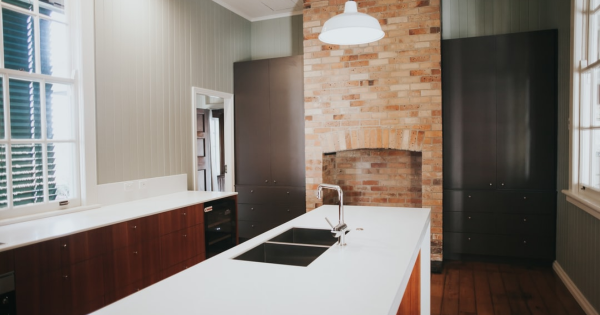If you’ve recently settled in a new house and you’re ready to start in on some home improvement, the first thing you need to do is decide which project gets done first. The only problem is that sometimes there are so many projects to do that you don’t know where to begin. How do you prioritize your spending on all of the projects you want to do? Here are a few tips to help you out.
Wait a Few Months
This might sound like a strange tip, but when 28% of homeowners get the urge to move every five years or so, waiting to get started can be a real challenge. It’s easy to point out a thousand cosmetic details you want to fix within the first few hours of being in your new home, but that doesn’t give you any time to get used to some of your house’s quirks. If you’re in a home that you believe needs some renovation but you’re not sure where to put your money first, settle in for a few weeks or months. You just might notice that the wallpaper is in excellent shape, but the water pressure in your shower is not. Or maybe the garbage disposal acts up every once in a while, but you don’t catch it until a few weeks in. Giving yourself some time to adjust to your new house will give you a better idea of what projects can wait and what projects deserve your money first. Not only that, but this will give you some time to save up for that first big renovation project.
Prioritize Money-Saving Projects
When you’re not sure how to prioritize your home improvement spending, one of the best things you can do is choose a project that will help you save money in the short-term. For instance, if you’re settling in and finding that your water bills are astronomical, it could be time to upgrade your bathroom and your plumbing. Maybe there’s a leak somewhere that needs to be fixed. Wherever you’re spending the most money on your home expenses is usually a pretty good place to start with your home improvement spending. Once the issue is fixed, you’ll be spending less money on that particular problem and you’ll be in a better place to start saving up for the next home improvement project. Some key areas to examine if you want to better prioritize your home improvement projects include:
- Water expenses
- Heating costs
- Cooling costs
- Electricity expenses
While these are typically the biggest expenses that prompt home improvement projects, they’re not the only ones. Maybe a dying tree in your lawn is costing you more money to maintain than it would cost to remove it. The key here is to closely analyze your expenses and determine which projects could help you reduce them the most.
Minimal Effort, Maximum Impact
Home improvement projects don’t always have to be a huge deal. Sometimes projects that require minimal effort end up having the greatest impact. A coat of paint, for instance. A good paint job should last up to 10 years. And it can make a world of difference in your new home if you choose the right color. Interior wall paint might not be the cheapest thing in the world, but it’s going to cost you much less than brand new countertops. When you focus your spending on projects that are going to require minimal effort and have a big impact, you just might find that it’s easier for you to save up money for the bigger projects you have in the pipeline.
Settling into a new home and choosing which projects to work on first can be a daunting task. But when you put these three tips into play, you should have an easier time prioritizing your spending on home improvement.

